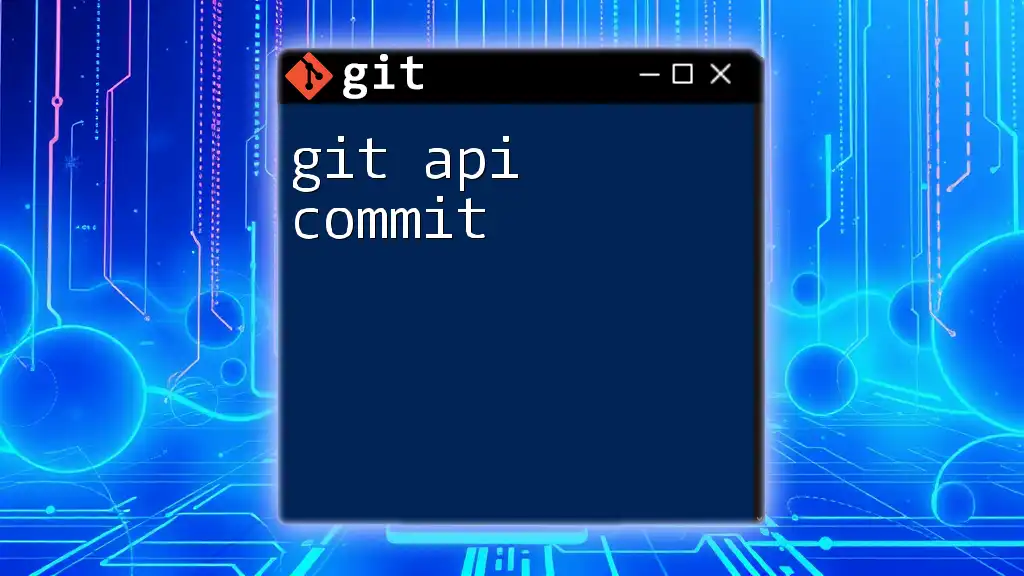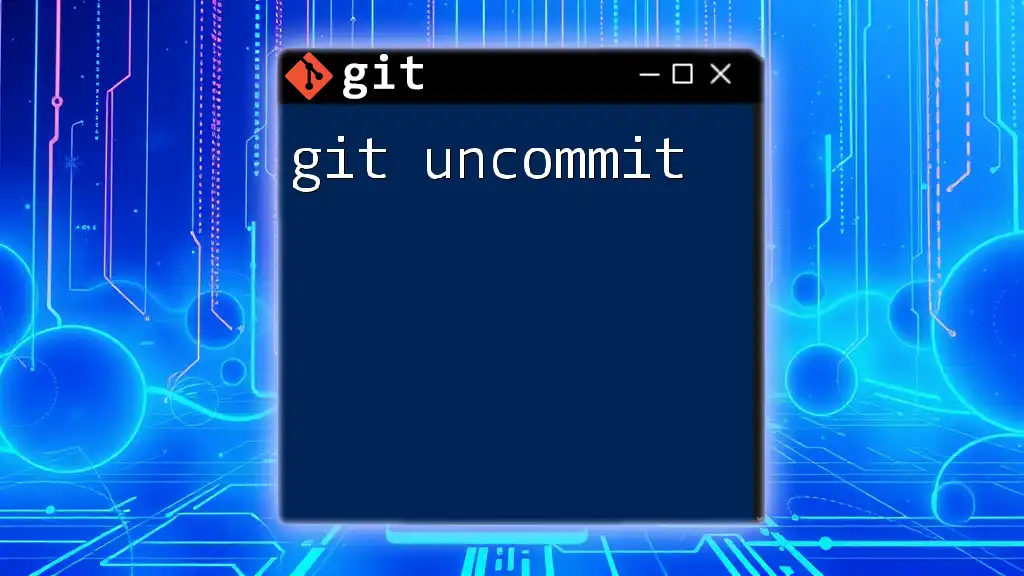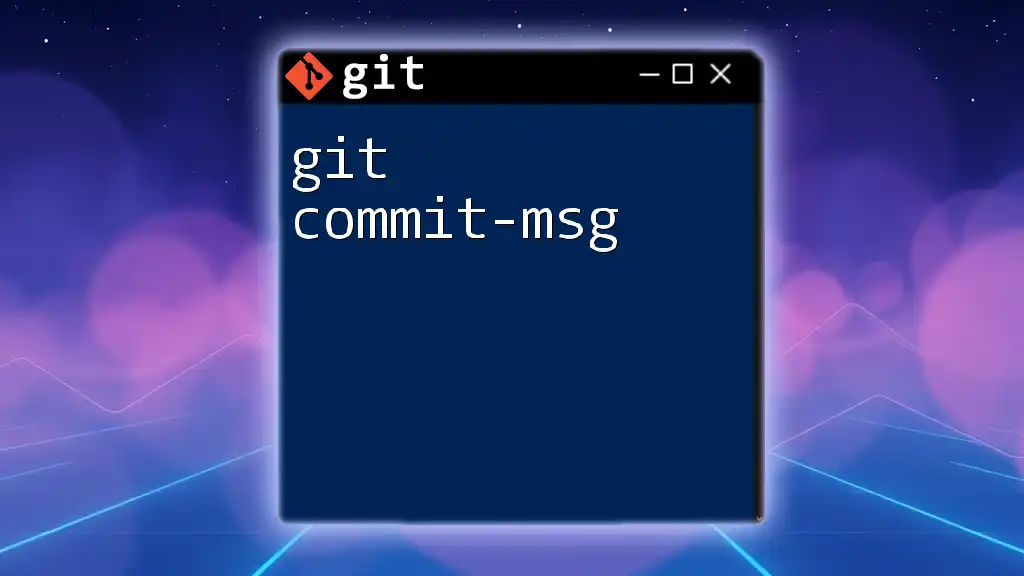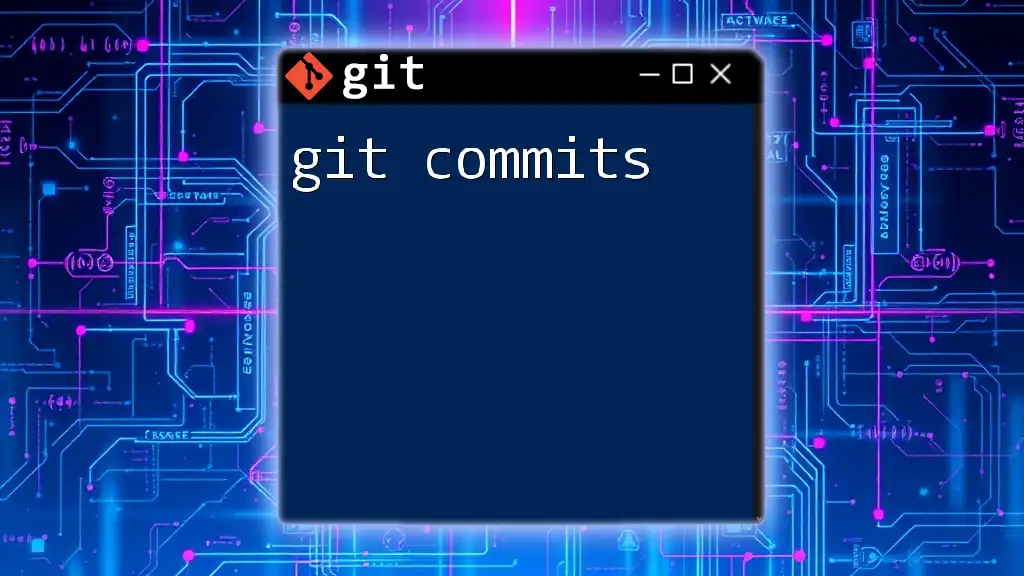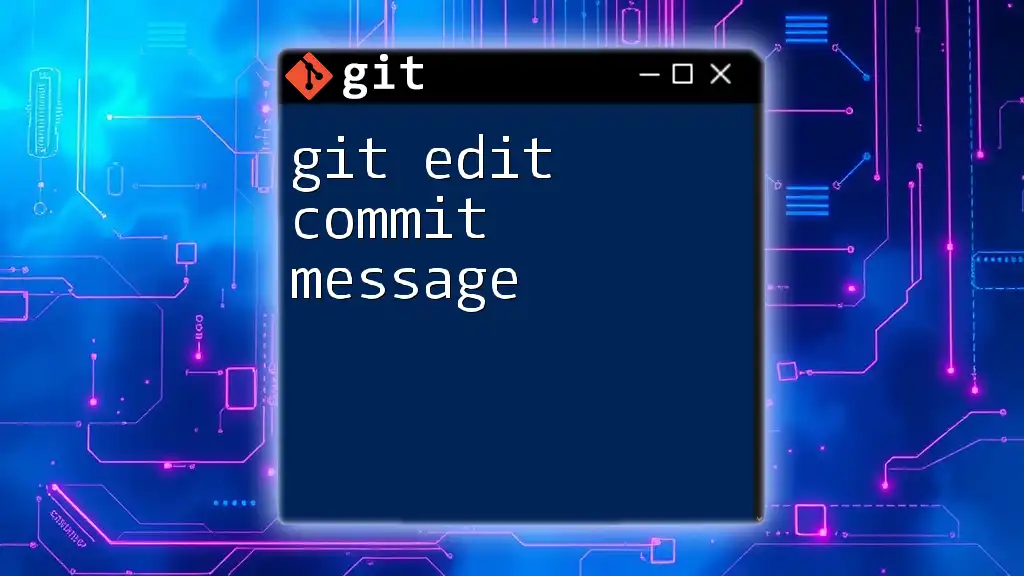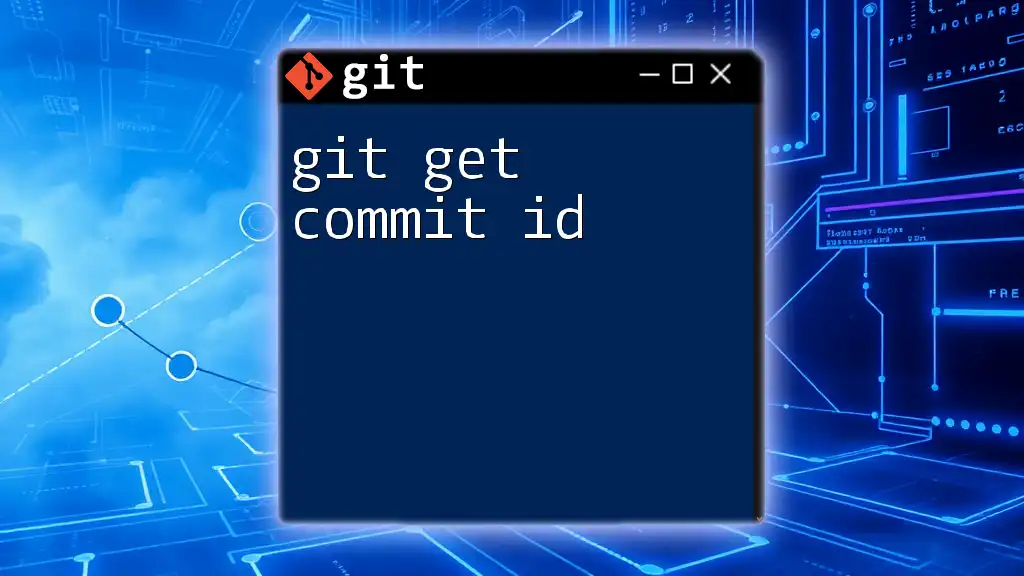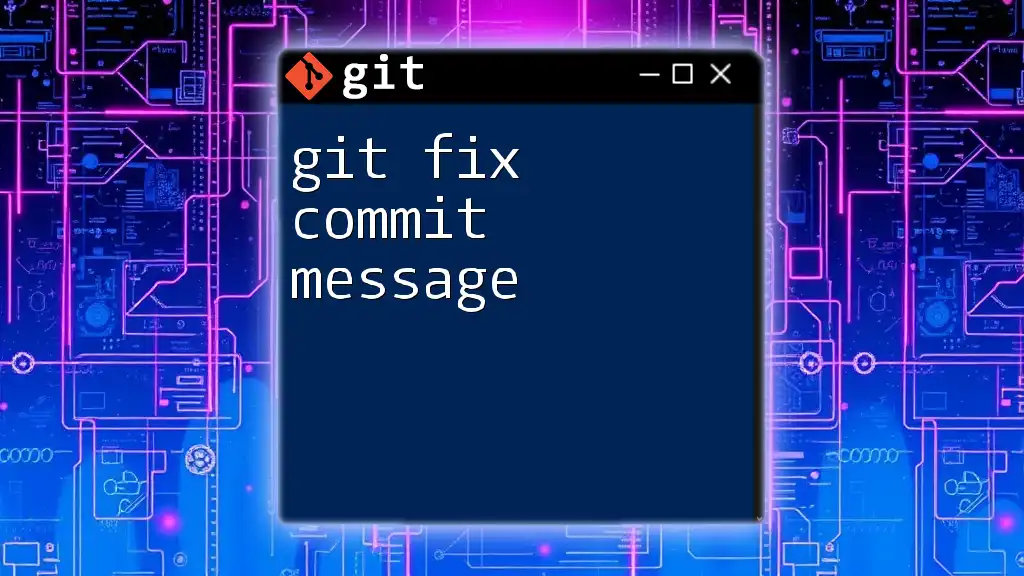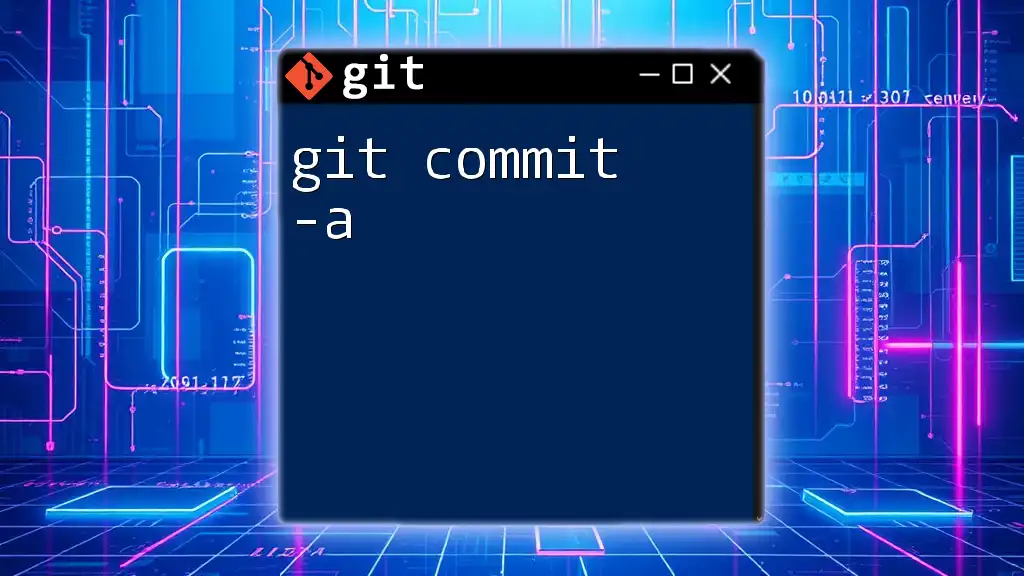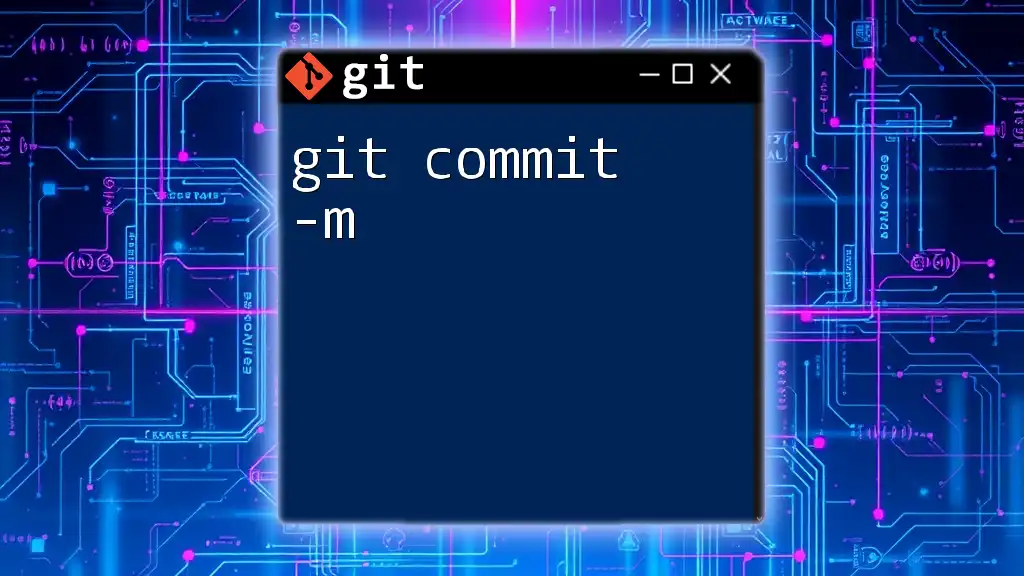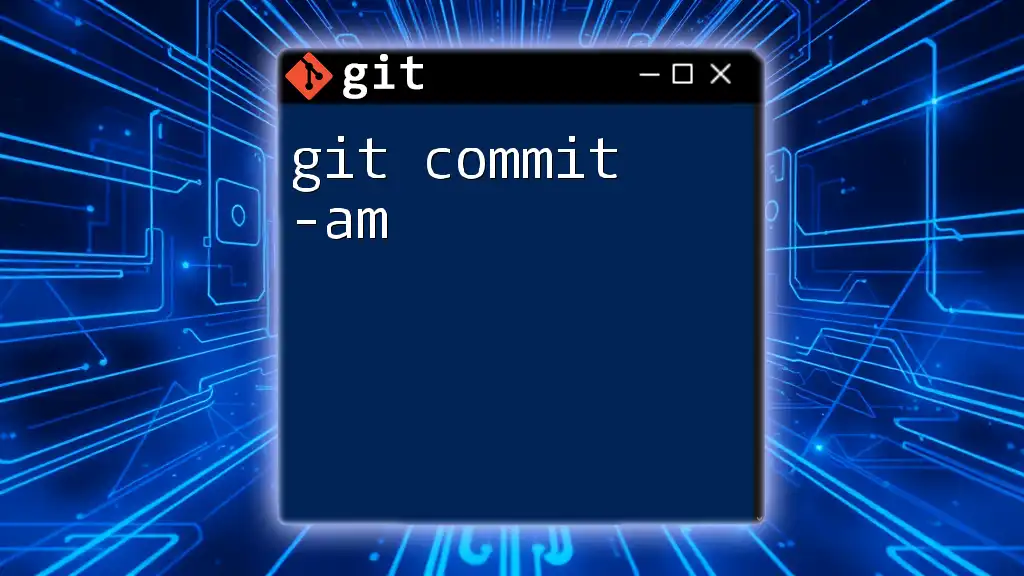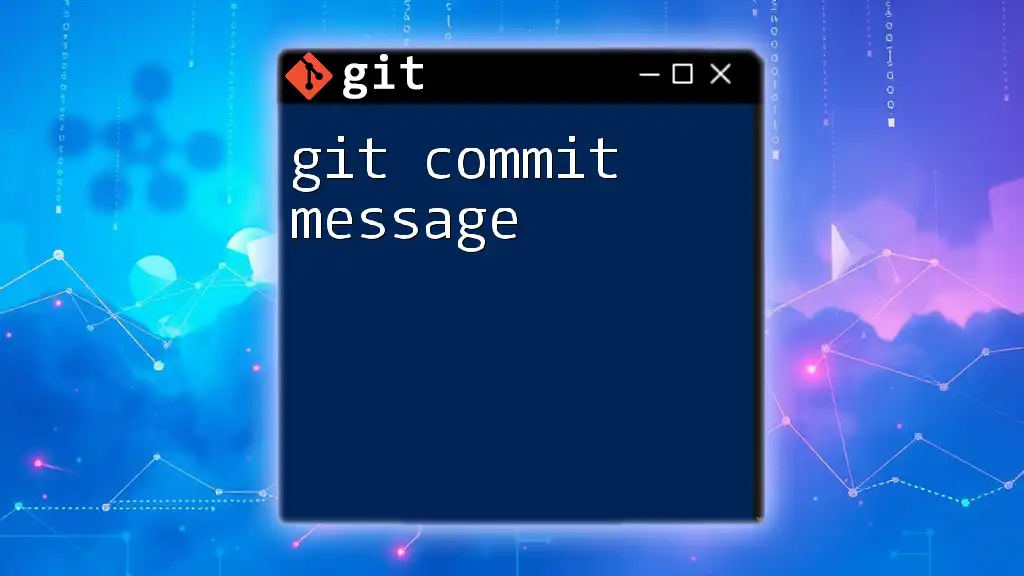The `git commit` command is used to create a snapshot of the changes in your staging area, allowing you to save your progress in the version history of your repository.
git commit -m "Your commit message here"
Understanding Git Commit
What is a Git Commit?
A Git commit is a fundamental action in Git that captures the state of your project at a specific point in time. When you commit, you are essentially creating a snapshot of all the changes you've made since your last commit. This allows you to track your project's history, making it easier to revert back or understand its evolution over time.
The beauty of committing lies in its efficiency. Rather than saving every individual change, Git saves a snapshot that represents the complete state of your project. In essence, you are building a timeline of your work, which is crucial for collaborative projects and version control.
Components of a Git Commit
Commit Message
One of the essential components of a Git commit is the commit message. It serves as a brief description of what changes were made in that commit. A well-written commit message is vital for:
- Informing collaborators of the purpose of the changes.
- Aiding future developers (including your future self) in understanding the reasoning behind changes.
Best practices for writing effective commit messages include:
-
Be concise yet descriptive: Aim for clarity without being verbose. For example, instead of saying "Fixed some bugs", say "Fixed overflow bug in payment processing".
-
Use the imperative mood: Write the message as if you are giving commands. For example, "Add feature to export user data" rather than "Added feature to export user data".
Commit Hash
Each commit in Git is identified by a SHA-1 hash, which is a 40-character string. This hash uniquely represents the changes in that commit, allowing you to reference specific commits accurately.
The commit hash serves several purposes:
- It provides a unique identifier for each commit, distinguishing it from others.
- You can use this hash to revert changes, view previous versions, or cherry-pick specific changes when needed.
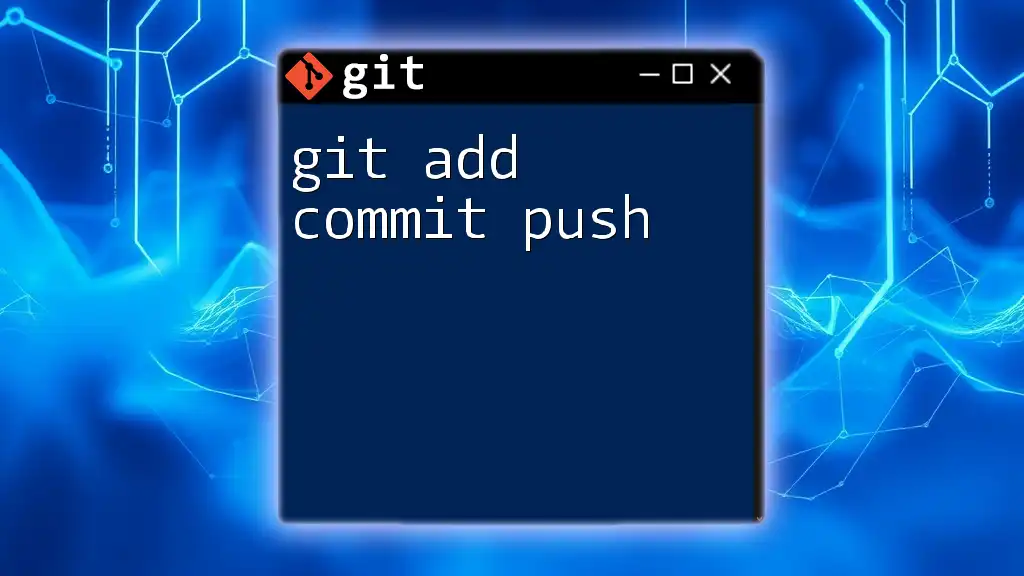
Using the Git Commit Command
Syntax of the `git commit` Command
The primary way to initiate a commit in Git is through the `git commit` command. The general syntax is as follows:
git commit [options] [file1] [file2] [...]
Basic Commit Commands
Making a Simple Commit
To create a commit, you need to stage changes with `git add` followed by the `git commit` command. Here's a step-by-step process:
-
First, stage your changes by tracking the files you want to commit:
git add .The `.` represents all modified files in the directory.
-
Next, create your commit by adding a descriptive message:
git commit -m "Initial commit"
This simple sequence allows you to capture and save your changes in the Git history.
Advanced Commit Options
Amending the Last Commit
Sometimes, you may realize that your last commit was missing some changes or had a typo in the message. In these cases, you can use the `--amend` option to modify the previous commit:
git commit --amend -m "Updated commit message"
This command will replace the last commit with a new one that includes any additional staged changes and updates the commit message.
Committing with a Specified Author
If you are working in a shared environment or on behalf of someone else, you may need to specify a different author for a commit. You can do this using the `--author` flag:
git commit --author="Author Name <author@example.com>" -m "Commit from specific author"
This is particularly useful for team collaborations, ensuring the right attribution for code contributions.
Commit Hooks
Commit hooks are scripts that Git executes before or after a commit. They allow you to automate certain tasks, such as running tests or enforcing coding standards.
- Pre-commit hooks can check for code quality or other criteria before allowing a commit.
- Post-commit hooks can notify team members or log information after committing.
An example of a simple pre-commit hook might look like this in a script file:
#!/bin/sh
# Check for code formatting
if ! npm run format-check; then
echo "Code formatting failed. Fix your code before committing."
exit 1
fi
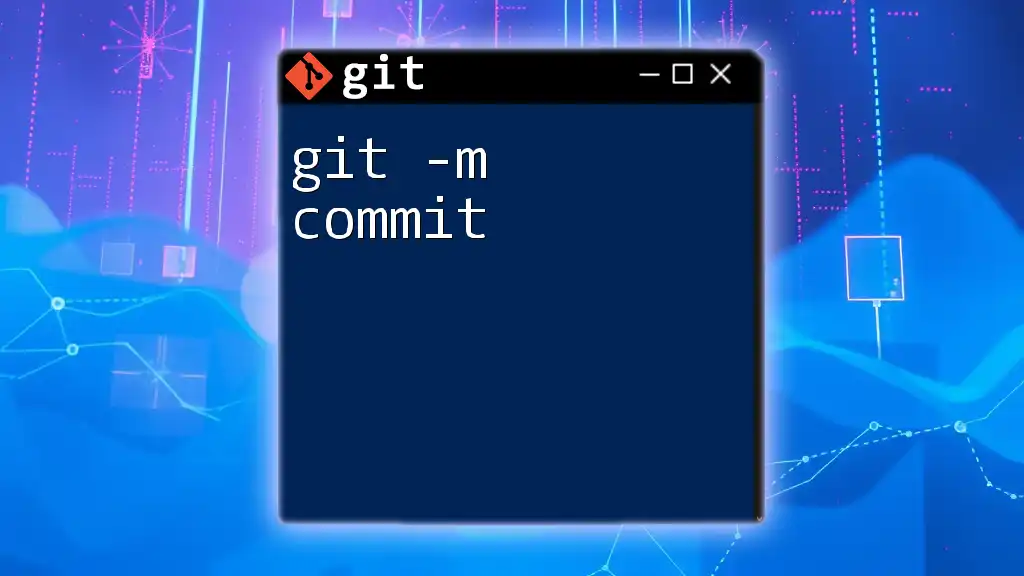
Using Git in the API Context
Why Use Git API for Commits?
The Git API allows developers to interact programmatically with Git repositories. Using Git commands through an API can automate the process of managing commits, particularly in applications or CI/CD pipelines.
By leveraging the Git API, you can easily integrate Git functionality into other software systems. This is especially beneficial when working collaboratively in cloud-based environments or automating workflows.
Making a Commit via Git API
Overview of Git API Endpoints
When it comes to making commits via the Git API, you will typically interact with several key endpoints, such as:
- Creating a commit
- Retrieving commit details
- Listing commits in a repository
These endpoints are designed to facilitate interaction with the repository without needing to navigate through the command line.
Example API Call to Create a Commit
To create a commit using the Git API, you'll need to prepare a JSON payload containing the commit message, the tree SHA, and the parent commit SHA(s). An example API call using `curl` might look like this:
curl -X POST https://api.github.com/repos/{owner}/{repo}/git/commits \
-H "Authorization: token YOUR_TOKEN" \
-d '{"message":"commit message","tree":"tree_sha","parents":["parent_sha"]}'
In this example:
- Replace `{owner}` and `{repo}` with your repository details.
- Include your personal access token in the header for authentication purposes.
- The `tree_sha` key refers to the state of the file tree at the time of the commit, while `parent_sha` points to the previous commit.
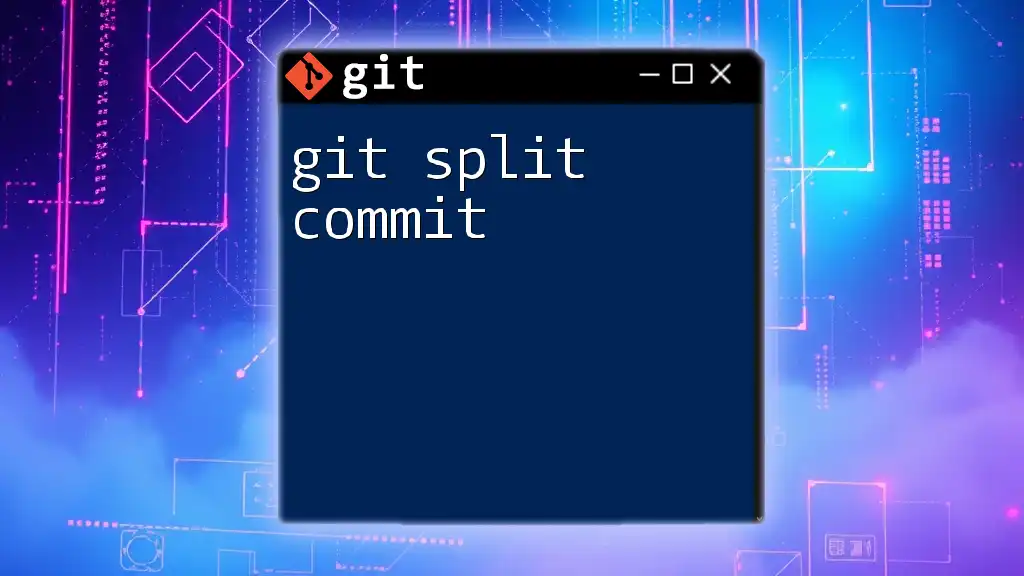
Common Issues and Troubleshooting
Error Handling in Git Commits
When working with commits, it is essential to understand how to navigate common error messages. Some prevalent errors include:
- Merge conflicts: Occur when changes to the same file conflict between branches. Resolving them requires manual intervention.
- Empty commits: Git will not allow you to commit without changes. Ensure you stage changes before attempting to commit.
Tips for resolving issues:
- Always read error messages closely; they often provide valuable insights into what went wrong.
- Use `git status` frequently to keep track of your changes and understand the state of your repository.
Best Practices
To maintain a clean Git history and collaborate effectively, the following best practices are recommended:
Keep commits small and focused: Each commit should represent a single logical change. This makes it easier for others to review your work.
Use meaningful commit messages: Well-written messages improve the readability of your project's history.
Regularly review commit history: Use `git log` to see your commit history. This helps you understand the sequence of changes and aids in debugging.
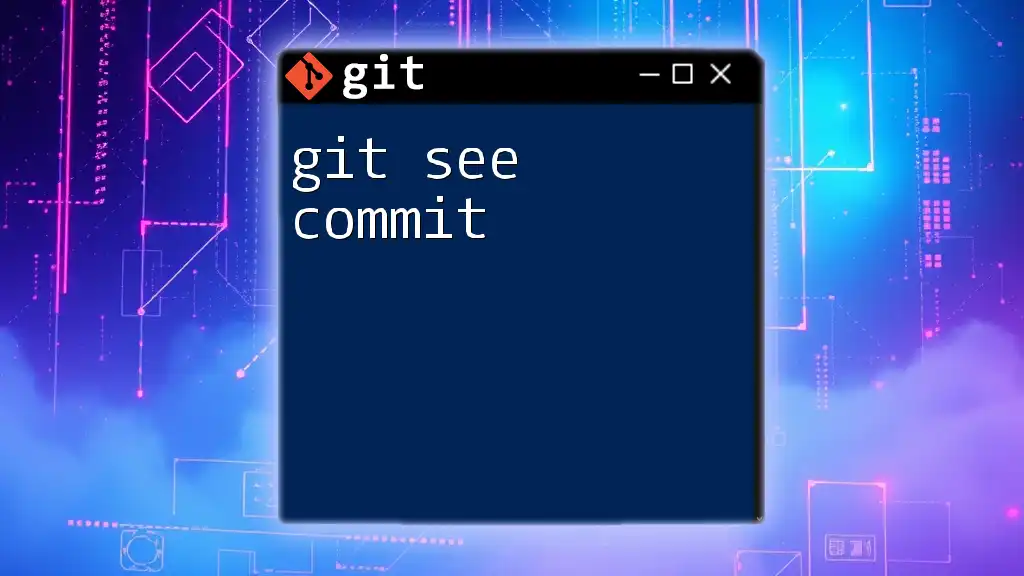
Conclusion
In summary, understanding how to work with `git commit` is a crucial skill for anyone using Git for version control. From creating and managing commits to leveraging the Git API for automated workflows, mastering these concepts enhances your efficiency when collaborating on projects. Regular practice and adherence to best practices will facilitate smoother development processes and clearer project histories.

Additional Resources
To further your understanding and capabilities with Git, consider exploring additional reading materials, tutorials, and tools. Engaging with the community through forums can also provide invaluable insights and assistance as you continue to learn. Happy committing!

